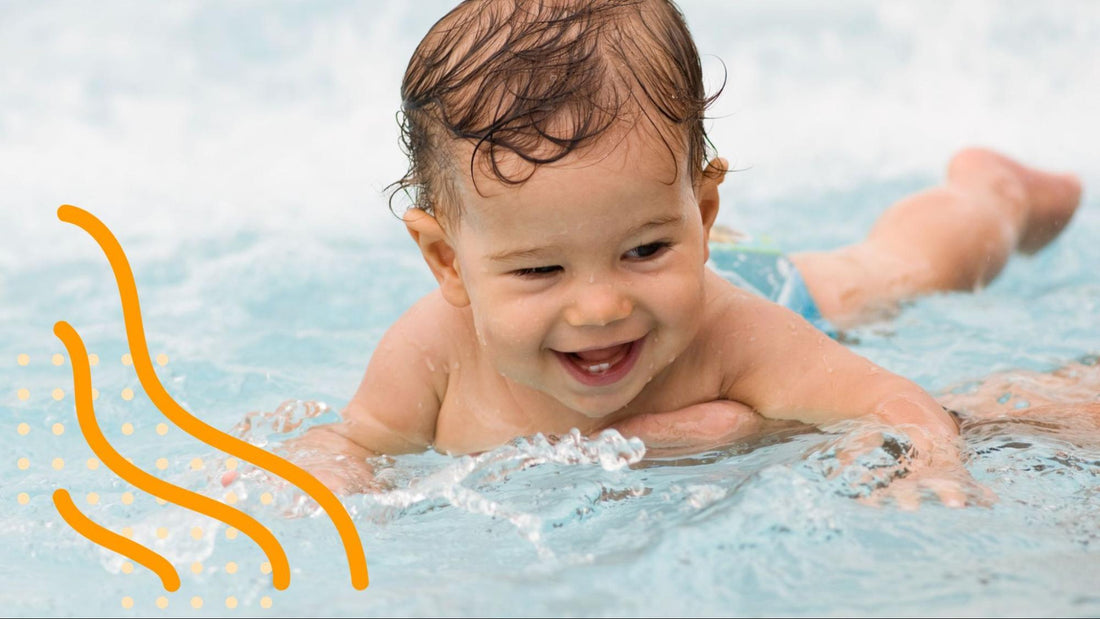
How to Treat Diaper Rash from Swim Diapers
Share
Just when you think you’ve mastered the art of preventing diaper rash, your little one enters their swimming era. And with swim diapers come new rash triggers — from chlorine exposure to extended wetness and even yeast buildup. But don't worry — treating diaper rash from swim diapers doesn’t have to be complicated. In fact, with the right steps, you may be able to get rid of a diaper rash in 24 hours.
Here’s what to know about how to treat diaper rash from swim diapers, plus how to prevent it from happening again.
Treating Diaper Rash from Swim Diapers
Treating this type of rash is similar to treating any other diaper rash, with a few extra considerations thanks to the water and chemicals involved.
Be Gentle When Removing Swim Diapers
Whether you're removing a disposable or reusable swim diaper, take care not to tug or pull too hard. Friction can irritate already sensitive skin and may cause painful micro-tears or even bleeding.
Tear disposable swim diapers at the sides, or use snaps on reusable swim diapers for a gentler removal.
Looking for a diaper brand you can trust? See what other parents recommend.
Let Them Air Out
After being in water, your baby's skin has likely been exposed to moisture for an extended period. This softens and weakens the skin barrier, making it more vulnerable to irritation and infection.
After removing the swim diaper, gently pat (don’t rub) your baby's bottom dry with a soft towel or soft cotton cleansing pad and allow time to air dry completely before putting on a new diaper.
Replenish & Protect Skin
Avoid using harsh wet wipes and products with potential irritants, such as fragrances and dyes. Instead, apply a gentle, nourishing product that both moisturizes and forms a breathable barrier layer.
Look for formulas made with safe, non-toxic ingredients like our 3-in-1 Diaper Care to help calm the rash and support the skin’s natural healing process.
Chlorine and Diaper Rash: What Parents Need to Know

Many public and private pools contain chlorine, and while it keeps water clean, it can dry out your baby’s skin and disrupt their skin’s natural barrier. This is especially problematic in the diaper area, where skin is already sensitive and often occluded by a tight-fitting diaper.
Signs of a chlorine rash:
- Redness or splotchy patches around the diaper area
- Dry, itchy skin that worsens after swimming
- Skin that appears chapped or cracked
If your baby’s rash flares up after pool time, chlorine could be the culprit.
Could It Be Yeast?
If your baby’s rash doesn’t improve within 24 hours — or appears shiny, red, and spreads into the folds of their skin — it could be a yeast diaper rash.
Yeast thrives in warm, moist environments like swim diapers, especially if your baby has stayed in the wet diaper longer than usual.
In this case:
- Let the area air out as much as possible
- Use a yeast-specific treatment as recommended by your pediatrician
- If needed, apply a light barrier cream to help protect the skin. Avoid thick creams that could trap moisture and make the rash worse.
Preventing a Rash from Swim Diapers

Prevention is often easier (and more comfortable) than treatment. Here’s how to avoid swim diaper rashes in the first place:
Change Your Baby Immediately After Swimming
Swim diapers are designed to hold in solids, not liquids — which means they do little to keep moisture away from your baby’s skin. Change your child right after they get out of the water to prevent prolonged exposure to wetness and chlorine.
Rinse the Skin
Use clean water to rinse your baby’s bottom post-swim. This helps remove chlorine, sand, bacteria, and other irritants that can stick to the skin.
Follow up with a soft towel pat and some air drying.
Use a Protective Balm Before Swim Time
A thin layer of NOLEO 3-in1 Diaper Care can help form a gentle barrier between your baby’s skin and the wet swim diaper — especially helpful if your little one’s skin is prone to irritation.
